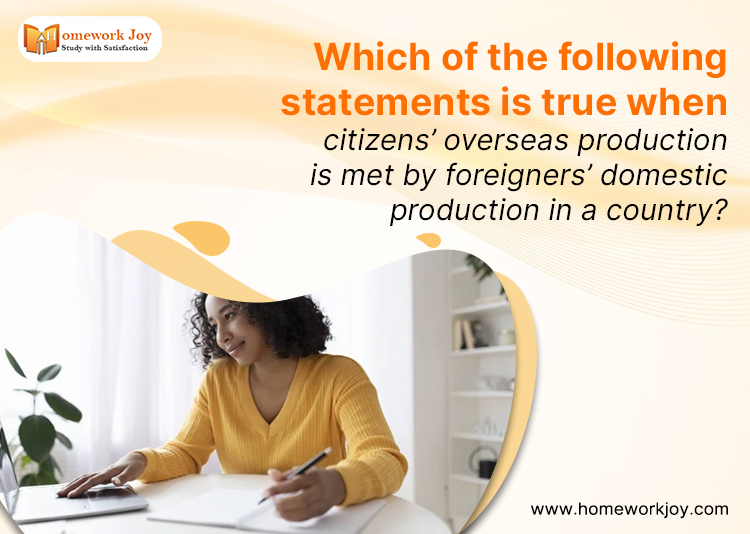Welcome to Homework Joy, your go-to resource for academic support and knowledge exploration. In this blog post, we delve into the fascinating world of global trade, where citizens’ overseas production intersects with foreigners’ domestic production. Join us as we unravel the implications of this scenario and shed light on the statements that hold true when such interactions occur within a country.
Understanding Global Trade: When Citizens’ Overseas Production Meets Foreigners’ Domestic Production
The Dynamics of Global Trade
Global trade plays a pivotal role in the interconnectedness of nations and the global economy. When citizens of one country engage in overseas production, exporting their goods or services, and those products are met by foreigners’ domestic production in another country, a complex web of economic interactions is woven.
Trade Balance and International Transactions
One statement that holds true when citizens’ overseas production is met by foreigners’ domestic production is that it affects a country’s trade balance. The trade balance refers to the difference between the value of a country’s exports and imports. When citizens’ overseas production is met by foreigners’ domestic production, it influences the trade balance by either contributing to a trade surplus (exports exceeding imports) or a trade deficit (imports exceeding exports).
Economic Impacts and Comparative Advantage
Another true statement in this scenario relates to the concept of comparative advantage. Comparative advantage occurs when a country specializes in producing goods or services in which it has a lower opportunity cost compared to other countries. When citizens’ overseas production is met by foreigners’ domestic production, it signifies the utilization of comparative advantage, as both parties are leveraging their strengths to maximize production efficiency and economic gains.
Exchange Rates and Currency Fluctuations
The interplay between citizens’ overseas production and foreigners’ domestic production is also influenced by exchange rates and currency fluctuations. When goods or services are traded internationally, exchange rates determine the value of currencies involved in the transactions. Fluctuations in exchange rates can impact the competitiveness of products, trade volumes, and the overall profitability of cross-border trade.
Socioeconomic Factors and Employment
The interaction between citizens’ overseas production and foreigners’ domestic production can have significant implications for employment. When citizens’ overseas production is met by foreigners’ domestic production, it can lead to the creation of jobs in both countries involved in the trade. Additionally, it can affect the distribution of jobs across industries, potentially resulting in shifts in employment patterns within a country.
Cultural Exchange and Global Cooperation
Beyond the economic aspects, citizens’ overseas production met by foreigners’ domestic production fosters cultural exchange and global cooperation. It provides opportunities for individuals from different countries to collaborate, share ideas, and learn from each other’s expertise. This enriches the cultural fabric of societies and contributes to a more interconnected and understanding world.
Conclusion:
In conclusion, the interplay between citizens’ overseas production and foreigners‘ domestic production is a multifaceted phenomenon that influences trade balances, comparative advantage, exchange rates, employment, and cultural exchange. Understanding these dynamics is crucial for comprehending the complexities of global trade and its impact on countries and individuals.
At Homework Joy, we believe in providing comprehensive academic support and fostering a deep understanding of various subjects. We hope this exploration of statements true when citizens’ overseas production is met by foreigners’ domestic production has broadened your knowledge and shed light on the intricacies of global trade.
Remember, Homework Joy is here to assist you on your educational journey, offering guidance and valuable insights.
